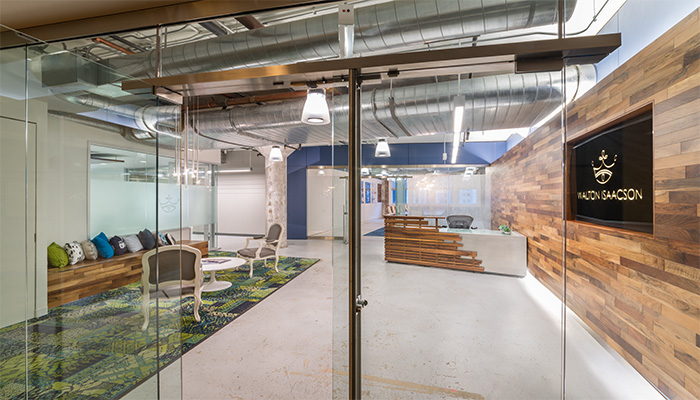Workplace design: An Opportunity to Market a Company’s Brand
By embracing your company's culture in your workplace design, we can create an inspiring and engaging place to work for your employees.
By embracing your company's culture in your workplace design, we can create an inspiring and engaging place to work for your employees.

Bernice Boucher states in her article “How Does an Office Dress for Success” that while companies have been getting better about making workplaces comfortable and flexible, something has been missing from their design: soul.
Boucher, a Managing Director in JLL’s Strategic Consulting Group with years of experience working with Fortune 100 companies, believes there are Three E’s of employee engagement. So far, modern companies have been embracing “efficiency” and “effectiveness,” which help spur collaboration and functionality. However, few have incorporated their own cultural “expression” in workplace design. How does your office dress for success
As an interior designer, I believe design solutions should embrace a client’s culture, brand and values. I was drawn to Boucher’s article because it provides the research and facts to support the financial benefits of “branding” a workplace. In the article, she describes how employees become more engaged, inspired, and emotionally tied to the success of the company when they are surrounded by the business’s brand image and values.
When an interior environment doesn’t reflect your company’s brand and culture, a space may look pleasing, but it might not be speaking to and about your company the way you want it to. If resources are being spent on a redesign, shouldn’t that investment be marketing your company’s brand for you?
High cost of disengaged workers
Boucher’s article quantifies how much money we’re losing to uninspired workers and the “crimes against productivity.” Gallup’s most recent “State of the American Workplace” study estimates that the U.S. loses $450-$550 billion each year to active disengagement. Of the employees surveyed, 70%-80% were either “not engaged” or “not fully engaged” in their work.
Employees who work daily in a generic, impersonal environment are not going to feel tied into the company’s overall goals. This leads to:
On the flip side, the benefits of embracing your culture in the workplace include:
When employees feel engaged, they want to go the extra mile. This leads to greater profitability, lower attrition rates, and better recruitment tools (candidates would consider a lower salary to work at a company with a strong organizational culture and facilities).
Companies deemed “great places to work” (http://www.greatplacetowork.com/) have half the turnover of their competitors. They are also almost 150% more profitable than competitors with more actively disengaged workers, according to the “State of the American Workplace” study.
Signs of a culturally expressive workplace
So how do you make your work environment reflect your company culture? First you must determine, what are your company’s attributes that you’re proud of and want to expand upon? These cultural values will inspire the design.
Questions to think about are:
Boucher uses the example of a health insurer that embraced its culture of health by creating a central atrium that acts as a “spine,” with stairs and ramps that encourage a culture of interaction and movement. Design elements like color, texture, and lighting can all reflect your company’s brand, too.
Combine those key elements with other “trademarks of a great workplace” (examples include promoting collaboration and allowing choice of where and how your employees work), and we’ve created a workplace that is fit for your unique culture.
By embracing cultural expression into your workplace design, you too can create an inspiring and engaging place to work for your employees.